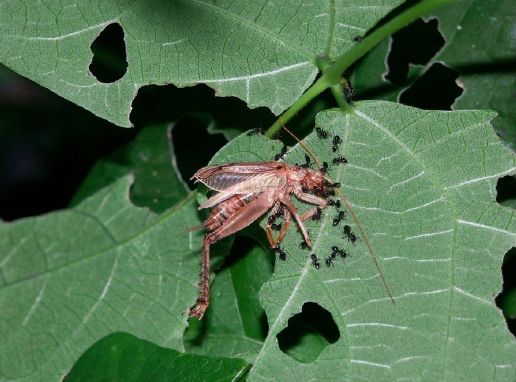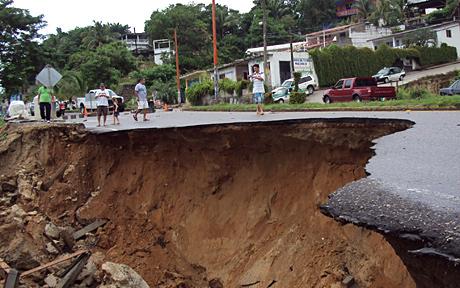
© Christian Kost/MPI Chemical EcologyAnts of the genus Crematogaster defend a Lima bean plant (Phaseolus lunatus) against an herbivorous insect.
Flowering plants produce nectar to attract insect pollinators. Some plant species, such as Lima bean, also secrete nectar from so-called extrafloral nectaries to attract ants which in turn fend off herbivores.
Scientists of the Max Planck Institute in Jena, Germany, have discovered that the production of extrafloral nectar is light dependent. They have shown that the plants are able not only to distinguish between day and night, but also to adapt their nectar secretion to current light conditions by using a special photoreceptor, the phytochrome.
Phytochrome probably influences the regulation of a special enzyme that binds the plant hormone jasmonic acid (JA) to the amino acid isoleucine (Ile). The emerging JA-Ile molecule affects the secretion of extrafloral nectar in such a way that the plant's defense against herbivores is most effective whenever herbivory is most likely - or, more precisely, during the day. (
PNAS Early Edition)
Plants have to continuously defend themselves against herbivores to survive and reproduce. They do this directly by producing toxic substances, such as nicotine, or indirectly, by calling their enemies' enemies for help. An example of an indirect defense is the release of volatile substances that attract predatory insects or parasitoids and guide them to their prey; for example, predatory wasps or bugs are led to a caterpillar that is feeding on a plant.


